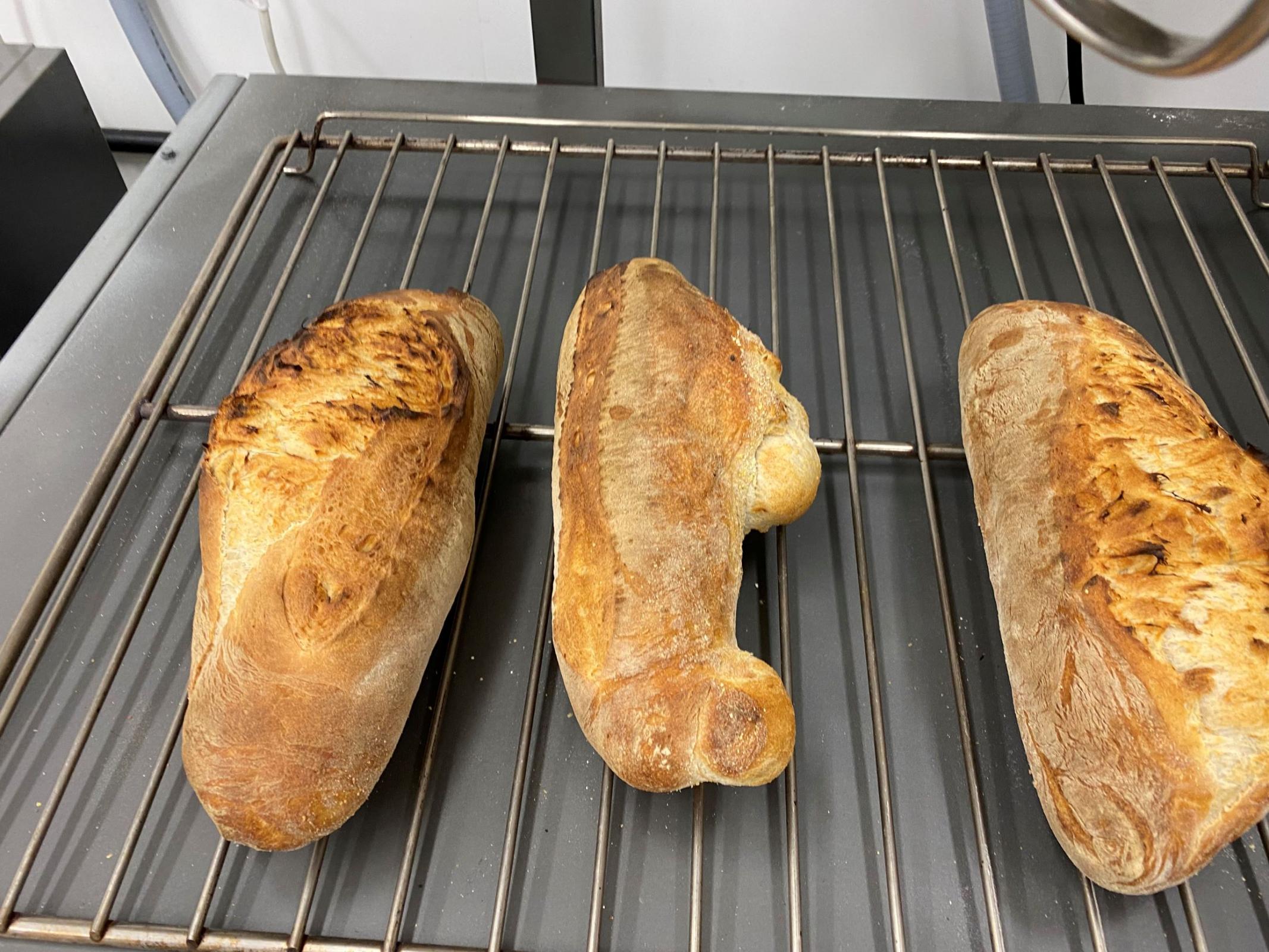
Ugly Loaves!

Good morning! I am hoping someone can help me with this. I am sure hundreds or thousands of people, if not everyone, at some point, has experienced this. I had this all working perfectly in my home, gas(weak convection) oven, turning the dough every hour for 8 hours.. I switched to a couple of powerful Vulcan, electric, convection ovens in a commercial kitchen. I mix the dough in a mixer and let it rise overnight. No matter how i form the loaves or score them, I get large bubbles on the surface of the loaves. I only use a sourdough starter, flour, and water. I let it proof overnight at 41 degrees. I then form the loaves and let rest an hour prior to baking with lots of steam.
Am I putting it in the oven when it is still too cold?
Not punching it down enough when forming the loaves on the bench for the final rest?
Is the yeast not evenly distributed?
What have I failed to account for?
The loaf in the middle of the picture exhibits the characteristic I want to eliminate.


the comments on these posts: https://www.thefreshloaf.com/search/node/bottom+blowout
--
And welcome to The Fresh Loaf. I hope you enjoy your participation here.
Hi Joel,
There are three different causes of blowouts.
In your case, if you changed nothing but the oven in your baking, it's the high oven temperature that caused it. Your new oven is hotter and with more powerful convection. So the top and bottom crusts form quicker. The surface zone on the side is weaker due to close vicinity of another loaf baking. Placement of loaves matter, don't place them too close to each other. So, in that weak area without much crust a blowout would appear.
Lower your oven temperature and don't place loaves as close to each other when they are baking. Placing loaves too near each other and baking at high temp with powerful convection will cause blowouts. My own example: convection oven, preheated baking stone, loaves are too close to each other and this doesn't let the crust form in the area between them:
Outcome: blowouts on both
Another cause is when bread dough is not fermented enough: tight, young, underfermented dough tends to be denser, less aerated, so that heat travels from outside to inside of the loaf slower and there is a lot of raw dough inside left by the time when the crust has already formed in the slashed area and cannot expand in the later stages of baking. Thus blowouts would appear.
Example: too tight, too young dough, underfermented due to not enough yeast activity caused blowouts. Baked loaves felt too heavy given their visual volume.
Normally fermented well aerated crumb, no blowouts
The last cause is prolonged yeast activity inside loaves (for whatever reason, maybe because your dough was too cold inside indeed and took too much time to warm up and to bake). Prolonged gassing by yeasts increases gas pressure inside loaves and that gas will push raw dough outside through the weakest spots in the crust, even if it's just one loaf inside your oven and it was heated uniformly all over by convection. No crust is uniform in thickness and equally sturdy all over, some areas are always weaker than others.
I now know it is called a 'blow-out' :), AND I have even more ideas how to address it! Y'all are awesome.
Congratulations on not falsely labeling your "masterpiece" "10/10"
-The Bread Inspectors